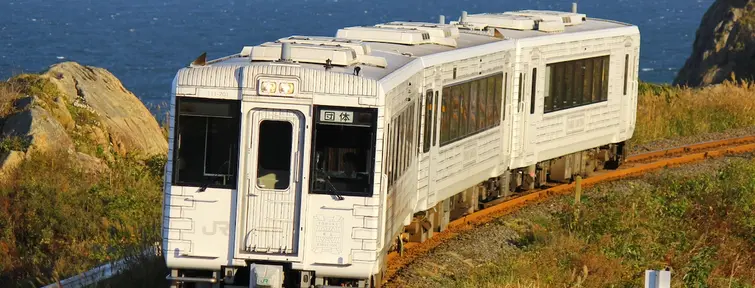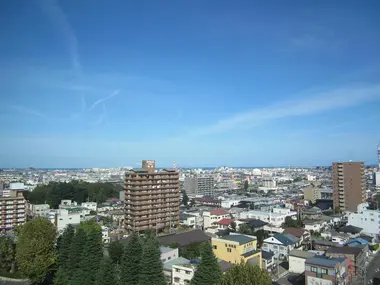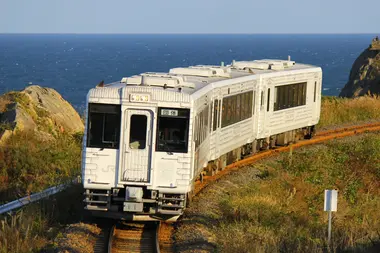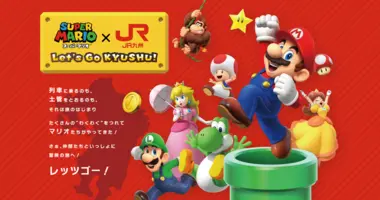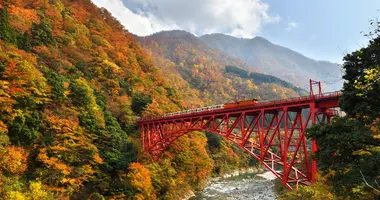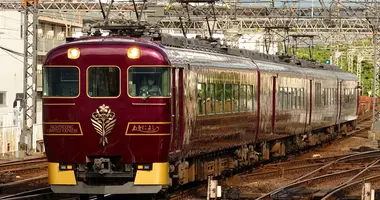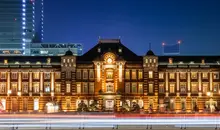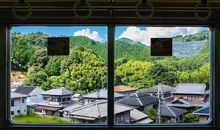L'emozione Tohoku
- Pubblicato il : 26/06/2016
- Per : Japan Experience
- Youtube
Buon design, cibo, arte e paesaggi in un treno
Il Tohoku Emotion è uno speciale treno giapponese che attraversa l'estremo nord dell'isola principale di Honshu.
Train è un treno di lusso che va da Hachinohe, nella prefettura di Aomori, a Kuji, nella prefettura di Iwate. Buon design, cibo, arte, paesaggi: c'è un sacco di cose fantastiche tutte in un treno!
L'orario di questo treno cambia mensilmente, quindi controlla con l'ufficio turistico locale (o con il tuo JRP Care) prima di fare piani.
C'è una cena meravigliosa da gustare sul Tohoku Emotion:
Da Hachinohe a Kuji, c'è un pranzo a prezzo fisso (¥ 7200 per gli adulti e ¥ 6600 per i bambini). Nella direzione opposta c'è il buffet di dessert (¥ 4100 per gli adulti, ¥ 3500 per i bambini). Un pasto di andata e ritorno il biglietto costa ¥ 10.800/¥ 9600.
Le stradine nel cuore di Hachinohe City sono piene di posti dove mangiare e bere. Dalle serate è gremito di gente, che esce per gustare il famoso pesce fresco che arriva proprio dalla costa di Hachinohe.
Creato nel 2013, il Tohoku Emotion è un treno dal design relativamente semplice e moderno all'esterno. È all'interno di ogni vagone che possiamo trovare tutti i dettagli che rendono questo treno unico.
La carrozza 1 del treno offre 7 scompartimenti privati, ognuno dei quali può ospitare 4 persone. Con le loro porte e finestre che si affacciano sull'oceano, gli scompartimenti sono ideali per un momento di tranquillità da soli o in compagnia.
Il Tohoku Emotion porta l'immersione ancora più in là con la sua zona cucina aperta nella carrozza 2. La decorazione è costituita da kogin salsicce e da un'area di cottura. La decorazione è costituita da kogin sashi (ricamo tradizionale a mano) realizzati nello stile tradizionale della città di Aomori.
In modo più discreto, il ferro Nambu è alla base delle pareti del bancone e delle sfere decorative della sala. Originario della prefettura di Iwate, nella regione di Tohoku, il ferro Nambu ricorda la presenza di elementi tradizionali di qualità.
Infine, il vagone 3 è dedicato alla zona pranzo. Sul pavimento, i ricami kogin sashi di Aomori richiamano le decorazioni della cabina 2. Qui, è negli apparecchi di illuminazione che si nascondono i dettagli! Qui i dettagli si nascondono negli apparecchi di illuminazione! Per le finiture esterne degli apparecchi è stata utilizzata la pietra d'inchiostro di Ogatsu, proveniente da Sendai, nel Tohoku, mentre l'ispirazione per la luce proviene dall'ambra Kohaku di Iwate.
Al di là dell'aspetto culinario, che cerca di mettere in mostra le specialità locali, la decorazione permette di immergersi nelle varie particolarità della regione di Tohoku.
